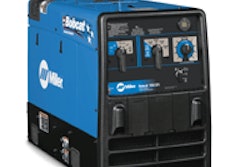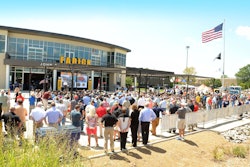The always reliable transportation analyst Ken Orski reports in his latest newsletter something that might upset preachers of the “infrastructure is crumbling” meme. Apparently, the public doesn’t share your concern. According to the Pew Research center, the state of our national infrastructure doesn’t even rate in the top ten of public priorities. Says Ken:
Why do appeals to increase infrastructure spending fail to resonate with the public? One widely held view is that people simply do not trust the federal government to spend their tax dollars wisely. As proof, evidence is cited that a great majority of state and local transportation ballot measures do get passed. They get approved because voters know precisely where their tax money is going.
So people don’t trust the federal government. No surprise there. Especially when pork politics comes up with projects like the Bridge to Nowhere.
But here’s an even more disturbing rationale for those who think we need better roads. Most people think the roads are fine. Orski again:
State DOTs and transit authorities take great pride in maintaining their systems in good condition and, by and large, they succeed. Potholes are rare, transit service is generally reliable, and train wrecks and collapsing bridges, happily, are few and far between….”Should I believe the pundits or my own eyes?” asked Charles Lane, editorial writer for the Washington Post who had traveled thousands of miles across America without seeing any evidence of “crumbling infrastructure.” He wrote about his experience in a Washington Post commentary last year (“The U.S. infrastructure argument that crumbles upon examination,” Washington Post, October 31, 2011).
If there is a solution to this conundrum, Orski says it may be in the tone that transporation advocates take in their public outreach. Instead of scary stories of a nation at risk, it might be more productive to talk about economic development, job creation and improving the quality of life and our economic competitiveness.
Orski is on to something here. The media loves to report it when the American Society of Civil Engineers gives our infrastructure a grade of D-. But how many in the press reported that when Chicago O’Hare Airport added a new runway in 2009 it improved on-time arrivals by 27 percent. Or that when the airport’s expansion plans are complete in 2020 that number will jump to 64 percent.
Given that millions of business travelers pass through that airport each year, the few billion dollars spend on these modernizations seems like a pretty good bargin. How many passengers fly to Chicago a day early to avoid the possibility of missing a meeting? How many of you have had to spend an extra night in the city because of canceled flights?
Granted this is an airport situation, but the parallels with our highway system fit. The transportation industry has numbers on what traffic congestion costs us in terms of labor hours–about two weeks every year for every person who commutes to a job; more in big cities like Houston and Los Angeles. But a great deal more has to be done to make the public aware of this and aware of how relatively inexpensive it would be on a individual basis to have a thriving, efficient transportation infrastructure.












